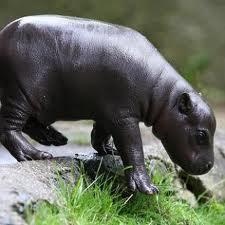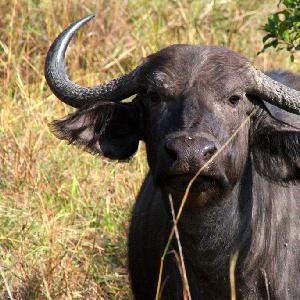Which is shorter, a Hippopotamus or an Ox?
Answer : A Hippopotamus is shorter than an Ox
The average height of a Hippopotamus is 88 cm, (2 ft, 10.6 in ) while the average height of an Ox is 131 cm, (4 ft, 3.6 in )
| Name | Name:Hippopotamus | Name:Ox |
| Height | Height:88 cm, (2 ft, 10.6 in ) | Height:131 cm, (4 ft, 3.6 in ) |
| * Pygmy Hippopotamus - ranges from 75 to 100cm | * Water Buffalo - ranges from 129 to 133cm | |
| Weight | Weight:200 kg, (441 lbs) | Weight:650 kg, (1433 lbs) |
| Top Speed | Top Speed:30 kph, (19 mph) | Top Speed:48 kph, (30 mph) |
| Lifespan in Wild (years) | Lifespan in Wild (years):30 | Lifespan in Wild (years):25 |
| Description | Description:Pygmy Hippopotamus is the mini version of the common or river hippo. It has a rounder and narrower head, a greenish-black, smooth layer of skin that secretes a pink fluid (blood sweat), which gives it a shiny look. It also acts like a sunscreen to prevent dehydration. | Description:Water Buffalo live throughout Africa, Australia, North America, and Europe. They have been domesticated for years for transporting heavy goods and machinery. They can spend hours submerged in muddy water. They are a primary source of meat, milk, and leather for humans. |
 |  |
Here are more interesting Questions